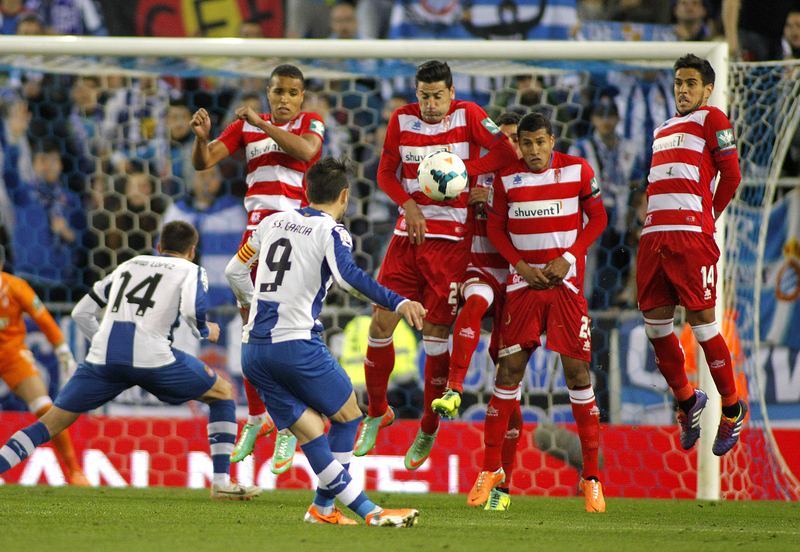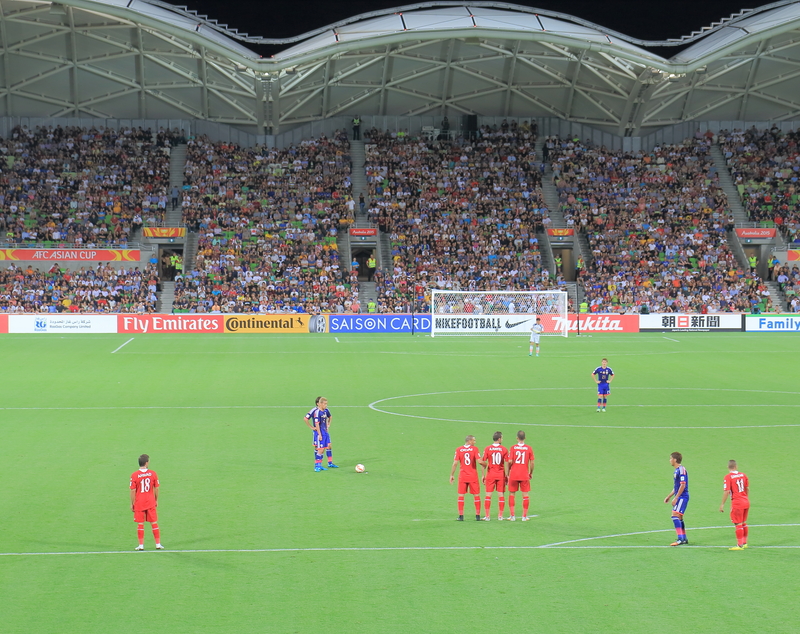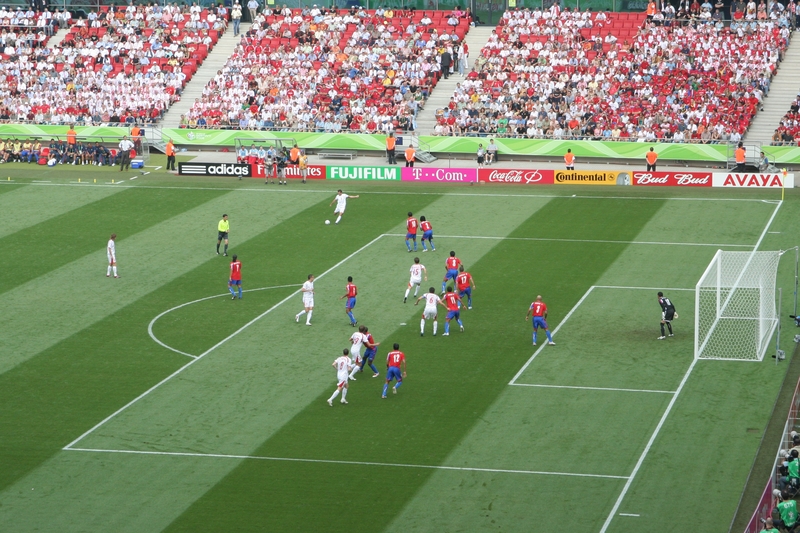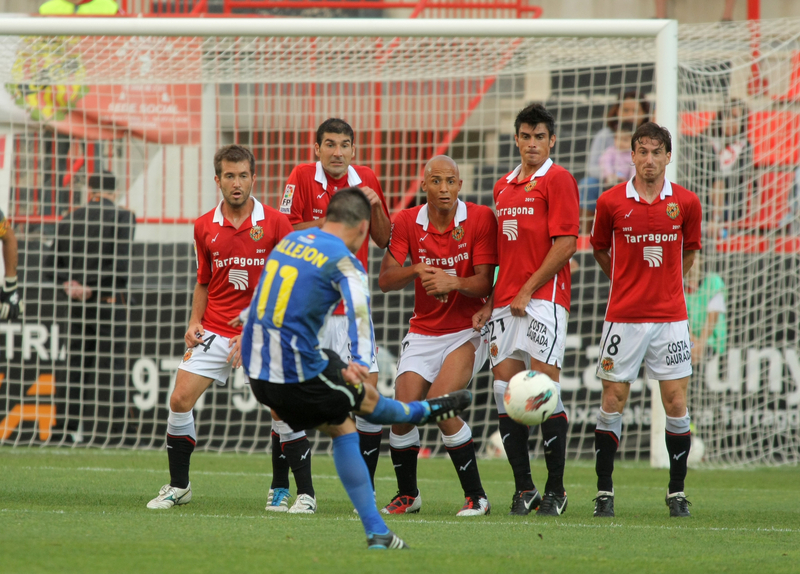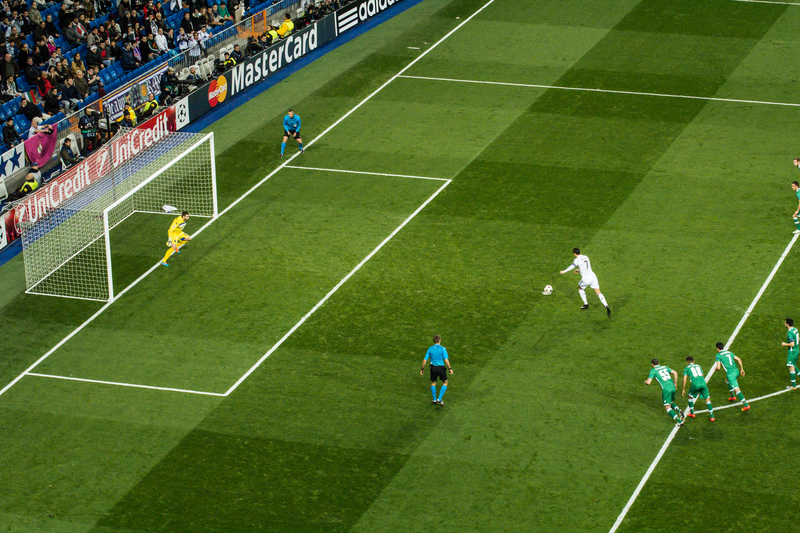Last updated on November 8th, 2023 at 09:06 am
According to Law 13, a free kick in soccer (association football) restarts the action during a game. Stoppage occurs in soccer matches from fouls, and the free kick occurs from the spot where the stoppage took place to resume the activity. A free kick during a soccer game can either be an indirect kick or a direct kick.
A free kick restarts the flow of action during a soccer game, and it is up to the referee to determine if it should be with a direct or indirect kick. The referee chooses the type of kick depending on the kind of foul. If the foul was not intentional, like a quick trip by a defensive player by accident, or if a team official accidentally enters the playing area to alert their players of something, the referee will reward an indirect kick to the other team.
However, a direct kick can occur if a player intentionally breaks up a play with excessive force or a tackle. For example, a direct kick can occur if a player purposely slides into another player from behind as they run up the pitch towards the goal. Also, a handball automatically results in a direct kick regardless of whether it was intentional or not.
What are the Differences Between an Indirect Free Kick vs. a Direct Free Kick?
An indirect kick means that the free kick taker must pass the ball to another player when they kick it, just like during a kickoff to start a game. An indirect kick can’t result in a direct goal from the kicker. If the kicker kicks the ball directly into the opponent’s goal without any other player touching it, the goal won’t count, and it will turn into a goal kick for the other team to resume the action.
Meanwhile, a direct free kick can result in a kicker’s goal from a shot towards the net. A direct kick can also pass the ball to another player or kick it into a group of defenders to break up their defensive wall in front of the goal.
How Does the Referee Signal an Indirect Free Kick vs. a Direct Free Kick?
If the referee raises their arm vertically above their head, that signals an indirect free kick. However, if the referee extends their arm away from their body, that signals a direct free kick.
What are the Free Kick Rules?
Once a disruption of the game’s flow occurs, the referee must signal what type of free kick they will call. They can either put their arms straight up in the air that signals an indirect kick or horizontal to the side to showcase a direct free kick.
Once a free kick establishes, the defense needs to be 10 yards away from the spot of the ball. From there, if it is an indirect kick, the kicker must pass the ball to another teammate. They, as the kicker, can’t touch the ball twice without another player touching it. The kicker can score directly from a shot or pass it to a teammate if it is a direct kick.
What is a Quick Free Kick?
While the rules state that the defense teams must be 10 yards away from the free kick spot, sometimes teams will opt for a quick free kick. A quick free kick means that the attacking team kicks the ball quickly, even if not all the defending players are ten yards away. Attacking teams will do this to try and catch the defending team off guard if they are not ready to defend, which means that the referee won’t call an offside penalty because the offense is waiving that rule for a quick kick.
Why Do Defensive Players Make a Wall on a Free Kick?
The defending team can make a wall with their players to protect their goal on a direct free kick. The defending team can jump in the air to try and deflect the ball only after the kick, but they must be 10 yards away from the kicker. If a direct kick goes to the offensive team, and the spot of the ball is close enough to the goal, the defense will make this human wall to limit the chance of a goal.
What are the Ways that the Free Kick Needs to Occur Again?
There are numerous ways when there is a do-over via a free kick during a soccer game. Here are some ways that a new free kick needs to happen.
- The defensive player is closer than 9.15 meters (10 yards) to the ball when a player kicks it once the referee signals that the kicker can kick it. After a warning from the referee about this, a player can receive a yellow card if this continues. However, a quick kick is something where the offense waives this penalty if they want to resume the action quickly.
- If the ball is moving, like on a windy day, then the kick needs to happen again since the ball can’t move during this kick.
- A delay in the kick results in a retake
- If the kicker touches the ball twice, an indirect free kick goes to the opposing team
What Happens if the Offense Gets a Free Kick?
If the offense receives the free kick penalty, all defensive players must be 9.15 meters (10 yards) away from the start of the kick.
What Happens if the Defense Gets a Free Kick?
If a free kick, either direct or indirect, goes to the defense team inside their own penalty area, then the opposing team must be 9.15 meters from the ball when they kick it. The goalkeeper can move the ball wherever they want as long as they are in the penalty area, which is different from a regular free kick where the action resumes from where the disruption took place on the pitch. Once the goalie kicks the ball from this area, the play resumes, and either team can then go after the soccer ball.
What Is the Difference between a Free Kick and a Penalty Kick?
Both indirect and direct kicks occur from a restart of play outside the penalty area. Depending on the severity of the soccer foul, the referee will either signal an indirect or direct kick. The defense must be 10 yards away from the kicker during a free kick.
Meanwhile, a penalty kick is an uncontested shot between one soccer player and their opponent’s goalkeeper from 12 yards away from the goal line. The penalty kick occurs in the penalty spot within the penalty area, which is in front of the goal. A penalty kick occurs when there is physical contact and a foul within the penalty area by an opposing player.
Can a Free Kick Occur Even with a Penalty in the Penalty Box?
Most penalties against the offensive team automatically result in a penalty kick in the penalty box. However, there is a rare occurrence that an indirect kick will occur from a penalty within the penalty box. This rare occurrence can happen if a defensive player kicks the ball back to the goalie, and the goalie picks up the ball with their hands. If this happens, the defending team gets an indirect kick from where the penalty occurred.
Conclusion: What is a Free Kick in Soccer?
In summary, the Laws of the Game section 13 states that a free kick resumes the game’s action after a disruption. Two types of free kicks can happen in a soccer (association football) game, and it is up to the referee to decide which kind of kick a player can take. If a player gets an indirect kick, they must have another player touch the ball from their kick, and if it is a direct kick, they can have a goal-scoring opportunity directly from their kick.
Similar Posts:
How Many Players are on a Soccer Team?
How Long is Extra Time in Soccer?
Greg Kristan, owner of The Stadium Reviews, LLC and TM Blast, LLC, brings his extensive experience visiting over half of the MLB ballparks, along with numerous MLS, NHL, NBA, and NFL venues, to provide in-depth coverage on the bag policy, food options, and parking. He has also been interviewed about his experiences on several sports podcasts.

